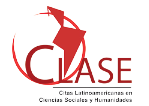Disinformation and information behavior in social media: science communication for prevention of the novel coronavirus
DOI:
https://doi.org/10.5433/1981-8920.2021v26n1p161Keywords:
Disinformation, Information behavior, Science communication, Social mediaAbstract
Introduction: The climate of insecurity about the Covid-19 pandemic, the lack of accurate information and the growing use of information and communication technologies seem to have contributed to promote the production and circulation of disinformation on social media.Objective: This study aimed to characterize the discursive practices associated with the “Vídeo do álcool gel no WhatsApp é mentira” and to identify expressions of information behavior in comments to the video.
Methodology: Content analysis was chosen as research method due to the characteristics of empirical material and the focus on emerging meanings.
Results: The results show ten discursive practices related to “Vídeo do álcool gel no WhatsApp é mentira”, represented by the following categories: opining, mocking, reporting congratulating, thanking, asking, engaging, contributing, supporting and requesting. The opining category was the most expressive, with 50% of the units of analysis, suggesting that the formation of opinion or judgment on the published content is a relevant aspect for users. Expressions compatible with information seeking, information sharing, information evaluation and information use behavior were observed in the following categories: reporting, asking, engaging, contributing and requesting, as well as the praise, convergence and criticism subcategories.
Conclusions: It is concluded that the characterization of the discursive practices expressed in the comments allowed the identification of information behavior in relation to the video and the ways of engaging with YouTube videos.
Downloads
References
BATES, M. J. Information behavior. In: McDonald, J. D.; Levine-Clark, M. Encyclopedia of Library and Information Sciences. 4. ed. Boca Raton: CRC Press, 2017. p. 2074-2085.
BRUNO, F.; ROQUE, T. A ponta de um iceberg de desconfiança. In: BARBOSA, M. Pós-verdade e fake news: reflexões sobre a guerra de narrativas. Rio de Janeiro: Cobogó, 2019. p. 13-23.
CASE, D. O. Looking for information: a survey of research on information seeking, needs, and behavior. 2. ed. London: Academic Press, 2007.
COOKE, N. A. Posttruth, truthiness, and alternative facts: information behavior and critical information consumption for a new age. The Library Quarterly, Chicago, v. 87, n. 3, p. 211-221, 2017. Disponível em: https://doi.org/10.1086/692298. Acesso em: 14 maio 2020.
CORRÊA, M. V.; VANZ, S. A. S. A formação do capital social no YouTube: estudo com base em um canal de divulgação científica de questões abordadas pela psicologia. Reciis: Revista Eletrônica de Comunicação, Informação e Inovação em Saúde, Rio de Janeiro, v. 14, n. 1, p. 167-183, jan./mar. 2020. Disponível em: https://doi.org/10.29397/reciis.v14i1.1756. Acesso em: 28 jun. 2020.
DAVENPORT, T. H.; PRUSAK, L. Cultura e comportamento em relação à informação. In: DAVENPORT, T. H. Ecologia da informação: por que só a tecnologia não basta para o sucesso na era da informação. São Paulo: Futura, 1998. cap. 6.
DERVIN, B.; NILAN, M. Information needs and uses. Annual Review of Information Science and Technology, White Plains, v. 21, p. 3-33, 1986.
EUROPEAN CENTRE FOR DISEASE PREVENTION AND CONTROL. COVID-19. Solna: ECDC, 2020. Disponível em: https://www.ecdc.europa.eu/en/novel-coronavirus-china. Acesso em: 23 mar. 2020.
FALLIS, D. What is disinformation?. Library Trends, Urbana, v. 63, n. 3, p. 401-426, 2015. Disponível em: https://muse.jhu.edu/article/579342/pdf. Acesso em: 5 maio 2020.
FERREIRA, R. M. C. Os efeitos dos meios sobre as atitudes e comportamentos da audiência. Matrizes, São Paulo, v. 8, n. 1, p. 255-269, jan./jun. 2014. Disponível em: https://doi.org/10.11606/issn.1982-8160.v8i1p255-269. Acesso em: 23 abr. 2020.
FETZER, J. H. Information: does it have to be true? Minds and Machines, Dordrecht, v. 14, n. 2, p. 223-229, May 2004. Disponível em: https://doi.org/10.1023/B:MIND.0000021682.61365.56. Acesso em: 6 maio 2020.
FRANKLIN, K. Os conceitos de doxa e episteme como determinação ética em Platão. Educar em Revista, Curitiba, n. 23, p. 374-374, jan./jun. 2004. Disponível em: http://ref.scielo.org/vpz73d. Acesso em: 26 abr. 2020.
GELFERT, Axel. Fake news: a definition. Informal Logic, Montréal, v. 38, n. 1, p. 84-117, 2018. Disponível em: https://doi.org/10.22329/il.v38i1.5068. Acesso em: 5 maio 2020.
GRAY, J.; BOUNEGRU, L.; VENTURINI, T. Introduction. In: BOUNEGRU, L. A field guide to fake news and other information disorders: a collection of recipes for those who love to cook with digital methods. Amsterdam: Public Data Lab, 2017. p. 6-13.
KARLOVA, N. A.; FISHER, E. A social diffusion model of misinformation and disinformation for understanding human information behaviour. Information Research, v. 18, n. 1, Mar. 2013. Disponível em: http://informationr.net/ir/18-1/paper573.html. Acesso em: 7 maio 2020.
KELMAN, H. C. Processes of opinion change. Public Opinion Quarterly, New York, v. 25, n. 1, p. 57-78, 1961. Disponível em: https://www.jstor.org/stable/2746461. Acesso em: 25 abr. 2020.
MARCUSSO, A. Comentários e dissonâncias em filmes publicitários no YouTube. 2013. Dissertação (Mestrado em Comunicação) – Universidade Municipal de São Caetano do Sul, São Caetano do Sul, 2013.
MORAES, R. Análise de conteúdo. Revista Educação, Porto Alegre, v. 22, n. 37, p. 7-32, 1999.
TERRA. Novo protocolo vai indicar máscara para quem não tem sintoma. 1 abr. 2020. Disponível em: https://www.terra.com.br/noticias/coronavirus/novo-protocolo-vai-indicar-mascara-para-quem-nao-tem-sintoma,562bad483811173c12f454ae3ccd255d33xvfrv4.html. Acesso em: 27 jun. 2020.
OPINIÃO. Dicionário priberam da língua portuguesa. Lisboa: Priberam Informática, 2020. Disponível em: https://dicionario.priberam.org/opinião. Acesso em: 26 abr. 2020.
PINHEIRO, M. M. K.; BRITO, V. P. Em busca do significado da desinformação. DataGramaZero, Rio de Janeiro, v. 15 n. 6, dez. 2014. Disponível em: https://www.brapci.inf.br/index.php/article/view/0000016135. Acesso em: 5 maio 2020.
RIEH, S. Y. Judgment of information quality and cognitive authority in the Web. Journal of the American Society for Information Science and Technology, New York, v. 53, n. 2, p. 145-161, 2002
RUÓTOLO, A. C. Audiência e recepção: perspectivas. Comunicação & Sociedade, São Bernardo do Campo, n. 30, 1998. Disponível em: https://www.metodista.br/revistas/revistas-ims/index.php/CSO/article/view/7875. Acesso em: 23 abr. 2020.
SILVA, C. M. M. O conceito de doxa em Aristóteles. Linha D'Água, São Paulo, v. 29, n. 2, p. 43-67, dez. 2016. Disponível em: http://dx.doi.org/10.11606/issn.2236-4242.v29i2p43-67. Acesso em: 26 abr. 2020.
SPINK, M. J. P.; MEDRADO, B. Produção de sentidos no cotidiano: uma abordagem teórico-metodológica para análise das práticas discursivas. In: SPINK, Mary Jane P. Práticas discursivas e produção de sentidos no cotidiano: aproximações teóricas e metodológicas. 2. ed. São Paulo: Cortez, 2000. cap. 2, p. 41-61.
STAHL, B. C. On the difference or equality of information, misinformation, and disinformation: a critical research perspective. Informing Science, Santa Rosa, v. 9, p. 83-96, 2006. Disponível em: http://www.inform.nu/Articles/Vol9/v9p083-096Stahl65.pdf. Acesso em: 6 maio 2020.
VIANA, N. As representações cotidianas e as correntes de opinião. Espaço Livre, v. 10, n. 19, p. 7-17, jan./jun. 2015. Disponível em: https://redelp.net/revistas/index.php/rel/article/view/293. Acesso em: 25 abr. 2020.
WILSON, T. D. Information behaviour: an interdisciplinary perspective. Information Processing & Management, Elmsford, v. 33, n. 4, p. 551-572, 1997.
WILSON, D. Human information behavior. Informing Science, Santa Rosa, v. 3, n. 2, p. 49-56, 2000.
Downloads
Published
How to Cite
Issue
Section
License
A revista se reserva o direito de efetuar, nos originais, alterações de ordem normativa, ortográfica e gramatical, com vistas a manter o padrão culto da língua e a credibilidade do veículo. Respeitará, no entanto, o estilo de escrever dos autores. Alterações, correções ou sugestões de ordem conceitual serão encaminhadas aos autores, quando necessário.
O conteúdo dos textos e a citação e uso de imagens submetidas são de inteira responsabilidade dos autores.
Em todas as citações posteriores, deverá ser consignada a fonte original de publicação, no caso a Informação & Informação.














